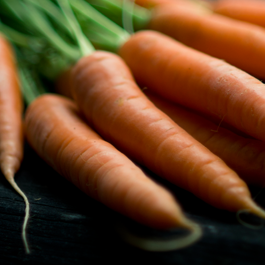Let’s start by looking at how the U.S. Department of Agriculture defines Organic…
On October 21, 2012 the USDA ruled that only foods certified as at least 95 percent organic – will be generally grown without synthetic pesticides, artificial fertilizers, irradiation (a form of radiation used to kill bacteria), or biotechnology (genetically modified organisms aka GMO’s). Animals on organic farms will eat organically grown feed and aren’t confined 100 percent of the time (as they sometimes are on conventional farms). Plus, they are raised without antibiotics or synthetic growth hormones. If the foods meet the above criteria, they will be allowed to carry the official “USDA Organic” seal.
Under the new guidelines, foods will be labeled as belonging to one of four categories:
- Food that is 100 percent organic may carry the new USDA label and say “100% Organic.”
- Food that is at least 95 percent organic may carry the new seal “USDA Organic” or “Certified Organic. The remaining 5% may contain foods or ingredients processed with additives on an approved list, but are not organic. For example, an ingredient containing a synthetic pesticide residue may be included in a certified organic food bearing the USDA logo, as long as that ingredient could not be obtained by the manufacturer in organic form and as long as the weight of the ingredient does not exceed 5% of the total weight of the product. However, there is one important caveat to this “5%” rule for certified organic foods… Even in the 5% “non-organic” portion of the food, ingredients are not allowed to be genetically engineered, fertilized with sewage sludge, or irradiated.
- Food that is at least 70 percent organic will list the organic ingredients on the front of the package. These products may say “made with organic ingredients” on the label, but may not use the seal.
- If a product is less than 70 percent organic, the organic ingredients may be listed on the side of the package but can’t use the seal or the word “organic” on their product labels. They can include the organic items in their ingredient list, however.
Now, don’t get confused by labels that say “Natural”. The terms “natural” and “organic” are not interchangeable. You may see “natural” and other terms such as “all natural,” “free-range” or “hormone-free” on food labels. These descriptions must be truthful, but don’t confuse them with the term “organic.” Only foods that are grown and processed according to USDA organic standards can be labeled as organic.
WOULD YOU LIKE TO LIVE A STRONG LIFE?
Join my email list for articles, health and fitness tips, exclusive announcements on new things we’re working on and product recommendations straight to your inbox! You can unsubscribe at any time.
We value your privacy and will never share your personal information.

